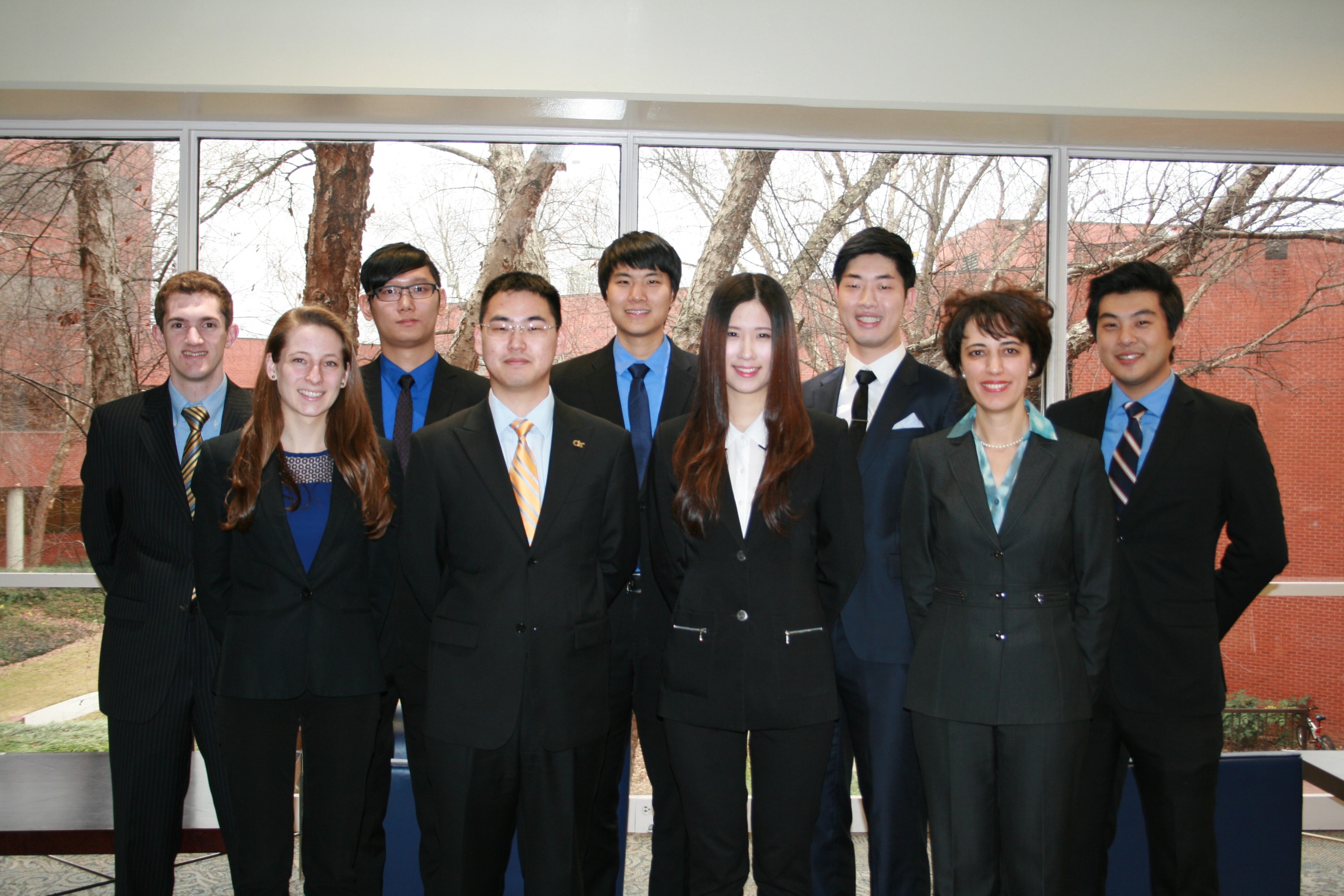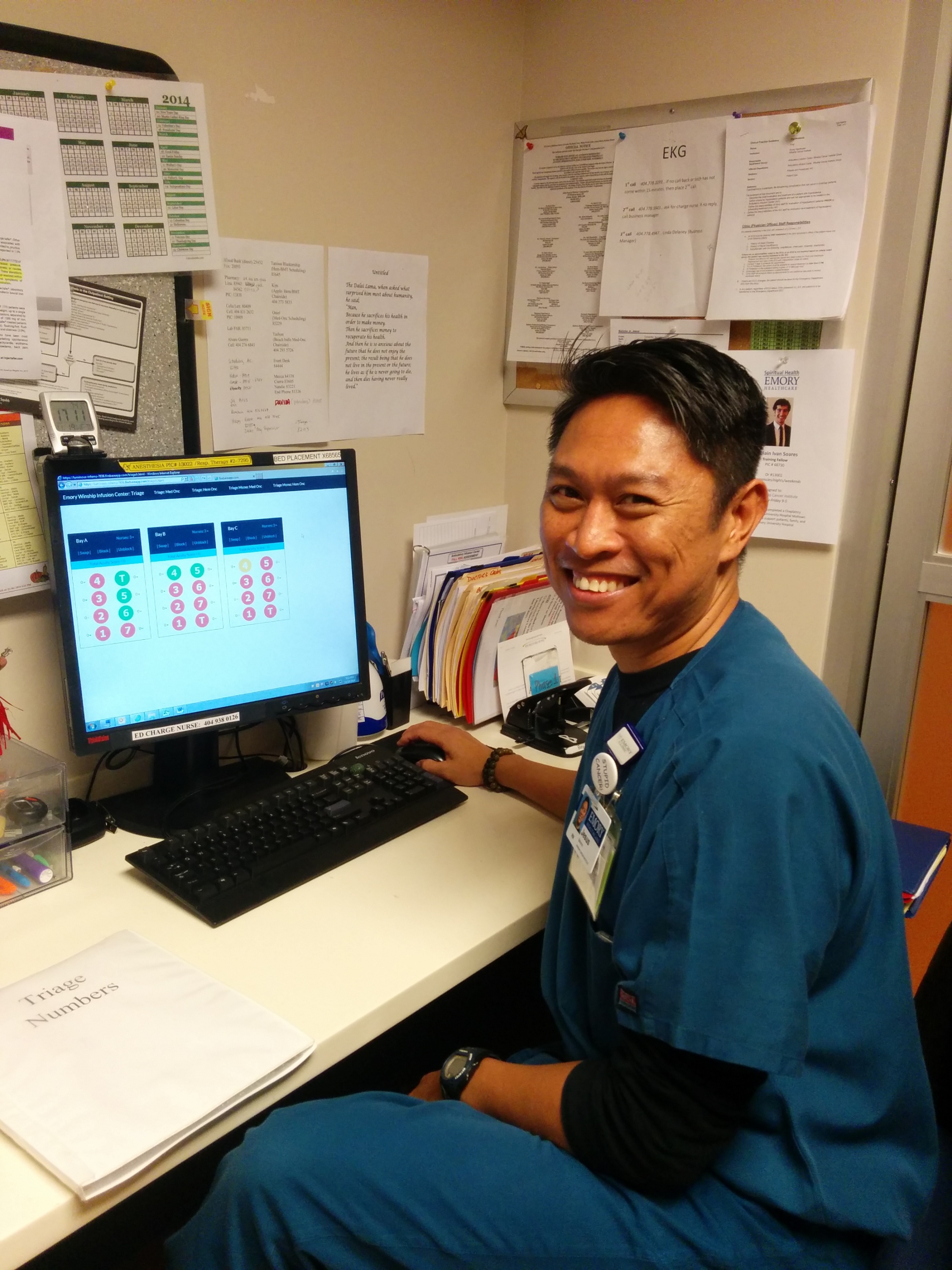ISyE’s Senior Design course is designed to help undergraduate students kickstart their careers. During this intense semester-long course, ISyE students form teams to work with a business or organization on a specific issue. By addressing complex problems, students learn about project management, problem solving, team building, and get a chance to hone their professional communication skills.
No doubt, working on real-world problems adds value to a student’s education, but when the project is actually implemented, the broader impact of the work is something worth talking about.
In one such case, a team of eight ISyE students, pictured on the next page with faculty advisor Pinar Keskinocak, worked with the Emory Winship Cancer Institute’s Ambulatory Infusion Center (AIC) during the fall semester of 2014. AIC wanted to shorten the amount of time patients waited before being taken to their infusion chair, to help reduce stress and anxiety for their cancer patients. The ISyE team focused on identifying the causes of delays and finding practical ways to curtail them.
After interviewing and shadowing staff and patients, collecting data, and conducting time studies, the ISyE team proposed that improved workflow, increased ability to know where patients were located during the various phases of the treatments, and a better system to notify nurses when chairs were available would shorten patient wait times.
The team then developed a Real-time Visibility Tool, a web- based app that allows the Infusion Center to communicate with and notify each other throughout the steps of the process. They also developed a comprehensive simulation model with a user interface enabling them to modify flow and observe results as well as a list of recommendations to improve AIC’s process flow.
AIC, impressed with the tool and recommendations, implemented the project.
“The impact of this [project] has been huge,” said Catherine Parker RN, MSN, OCN, the unit director at the Infusion Center. “The development and implementation of the visibility tool has helped the triage RNs significantly by providing a technological solution for what was extremely manual and inefficient. The tool has also made it possible on extremely short-staffed days to utilize only one triage RN, which helped the overall staffing for the team by adding the second triage RN back to direct care. This is substantial for the staff and patient flow.”
One of the implemented recommendations involved changes in the check-in process. Previously at check-in, paperwork was placed in a rack until one of the triage RNs could retrieve it. After implementing the ISyE team’s recommendations, the front-desk staff member delivered the paperwork to the triage office immediately after patient check-in.
AIC patients have reported to AIC that wait times have decreased due to this change.
“The Real-time Visibility Tool created by the Georgia Tech students has been one of the best tools I have ever worked with here at Winship,” said Claudia Giddings, RN. “As a triage nurse, it has cut down on time by more than 30-40 percent.”

